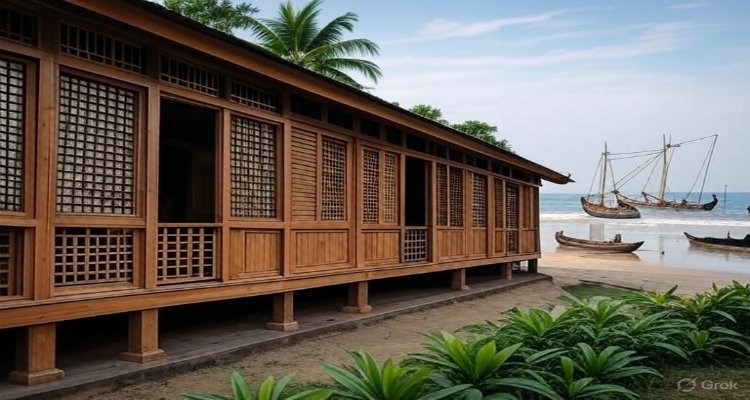Why Some Cultures Build Homes to Breathe
Across the world, some cultures design homes that “breathe” — allowing air, light, and nature to flow freely. Here’s why these architectural traditions endure.
Introduction: A House That Feels Alive
In the humid backwaters of Kerala, India, a traditional wooden house stands with wide verandas, high ceilings, and intricate lattice windows. Step inside, and you’ll feel something different — the air moves gently, carrying scents of jasmine and rain. This is no accident. For centuries, some cultures have built homes to “breathe,” allowing wind, sunlight, and moisture to flow naturally, creating spaces that feel alive.
Context & Background: The Origins of “Breathing” Architecture
Breathing homes are not a modern sustainability trend — they are an ancient necessity. Long before air conditioners and electric fans, people relied on design to manage temperature and humidity.
- Climate Adaptation: In tropical and subtropical regions like Southeast Asia, Africa, and South America, traditional homes often used open layouts, shaded courtyards, and high roofs to cool interiors naturally.
- Cultural Philosophy: In Japan, the concept of ma — the harmonious use of space — influences homes that encourage airflow and light as part of well-being. In Arab cultures, badgirs (wind towers) are centuries-old ventilation systems that funnel cool breezes indoors.
- Materials that Breathe: Earth, bamboo, palm leaves, and timber — all naturally porous — allow moisture to escape and prevent heat buildup.
These principles created homes that didn’t just shelter people, but connected them with their environment.
Main Developments: Science Meets Tradition
Modern architects and environmental scientists are revisiting these breathing home designs — not as nostalgia, but as climate solutions.
- Passive Cooling Systems: Studies show that strategic ventilation can reduce indoor temperatures by 5–10°C without mechanical cooling.
- Humidity Control: Breathing homes reduce mold risk by preventing trapped moisture — a growing concern in urban high-rises.
- Energy Savings: The World Green Building Council estimates that buildings designed for passive ventilation can cut energy use by up to 30%.
From rural Indonesia to urban Mexico, new housing projects are integrating traditional airflow designs into modern structures — proving that old wisdom still works in a warming world.
Expert Insight: Why It Matters Today
“Breathing architecture isn’t just romantic — it’s practical climate resilience,” says Dr. Lina Moretti, an environmental design researcher at the University of Florence. “We’re rediscovering techniques that can lower energy demand and improve human comfort, especially in regions facing extreme heat.”
Cultural heritage experts also point out that these designs strengthen community identity. “When you live in a home built with local traditions, you carry a piece of your ancestors’ survival strategies,” notes architect and heritage consultant Salim Khan.
Impact & Implications: The Future of Breathing Homes
As cities expand and temperatures rise, breathable homes could be vital in reducing heat stress, especially in developing countries where energy costs are high.
- Urban Integration: Architects are experimenting with breathable facades, rooftop gardens, and cross-ventilation corridors even in high-density apartment blocks.
- Policy Influence: Some governments in Southeast Asia and Africa are offering incentives for designs that reduce reliance on air conditioning.
- Cultural Revival: Beyond the environmental benefits, reviving breathing home traditions fosters pride in local craftsmanship and sustainable living.
Conclusion: Returning to Wisdom That Works
The idea of a house that breathes may sound poetic, but it is grounded in both science and survival. From the wind-swept courtyards of Morocco to the stilted bamboo homes of Vietnam, these designs prove that comfort doesn’t have to come from a power outlet. In a future where heatwaves grow stronger and energy becomes precious, breathing homes may shift from being a cultural artifact to a global necessity.
Disclaimer: This article is for informational purposes only and does not constitute architectural, engineering, or construction advice. Readers should consult qualified professionals before undertaking building projects.











